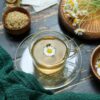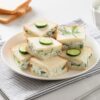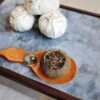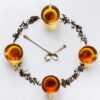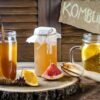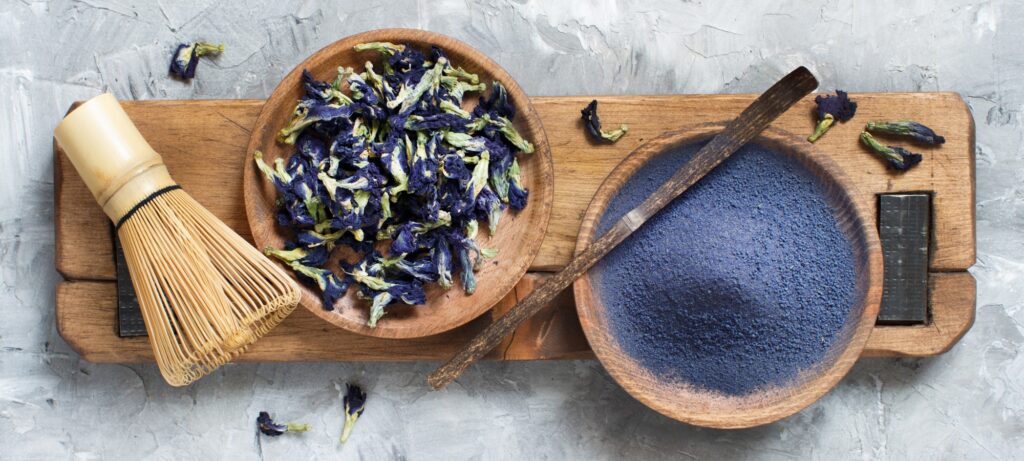
Step into the enchanting world of butterfly pea tea and unlock the secrets of this vibrantly hued elixir. From its mesmerizing azure color to its numerous health benefits, this drink is captivating tea lovers worldwide.
The butterfly pea flower, native to Southeast Asia, has long been revered for its natural dyeing properties. Steeped in hot water, it releases a captivating indigo hue that is as visually stunning as it is refreshing. But butterfly pea tea is more than just a pretty face. It is packed with antioxidants and has been used in traditional medicine to promote relaxation, improve digestion, and boost brain health.
Here, we will delve into the fascinating history and cultural significance of butterfly pea tea. Discover the rituals surrounding its consumption and learn how to brew the perfect cup. Explore the potential health benefits, from its calming effects to its potential anti-aging properties.
Join us on this sensory journey as we uncover the magic of butterfly pea tea and find out why it is the talk of the tea world. Get ready to immerse yourself in the captivating world of this colorful elixir.
The History and Origins of Butterfly Pea Tea
Butterfly pea tea has a rich history that dates back centuries. The butterfly pea flower, scientifically known as Clitoria ternatea, is native to Southeast Asia, including countries like Thailand, Malaysia, and Indonesia. It has been used in traditional medicine and culinary practices in these regions for generations.
In Thai culture, butterfly pea tea is known as “nam dok anchan” and has been consumed for its health benefits as well as its striking appearance. It is often served as a refreshing drink to cool down in the hot tropical climate. In Malaysia, the tea is called “bunga telang” and is a popular ingredient in traditional desserts and rice dishes.
The vibrant blue color of butterfly pea tea comes from the petals of the flower, which contain natural pigments called anthocyanins. These pigments are responsible for the blue and purple hues found in many fruits and vegetables. The petals are dried and then steeped in hot water to create the vibrant blue infusion that is butterfly pea tea.
The popularity of butterfly pea tea has spread beyond Southeast Asia in recent years, captivating tea enthusiasts around the world. Its unique flavor profile and stunning appearance make it a favorite among those seeking a truly unique tea experience.
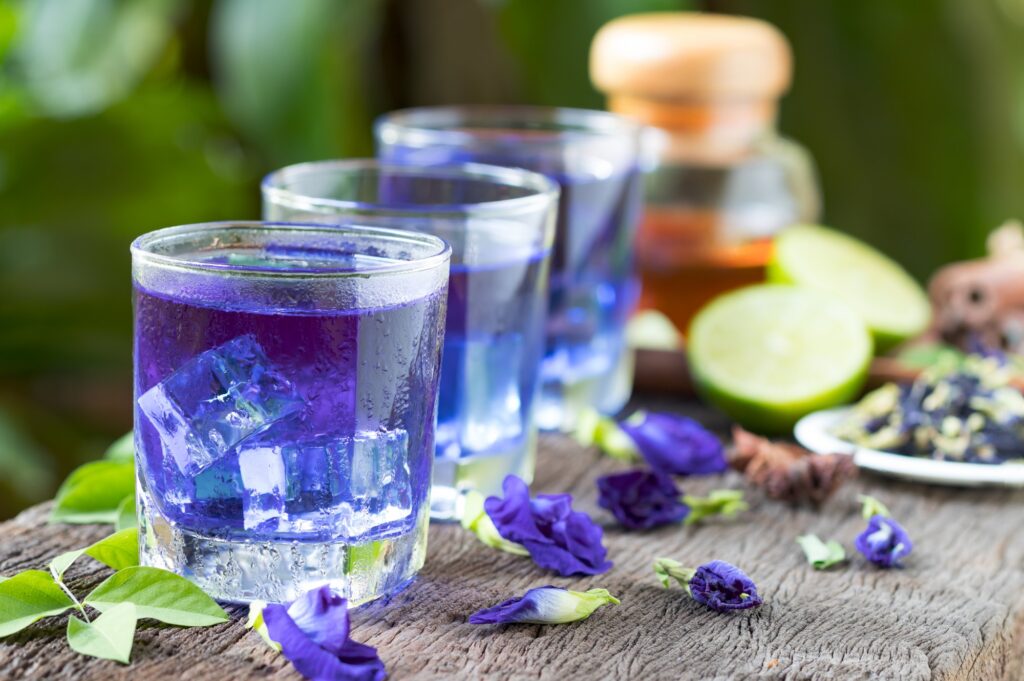
Health Benefits of Butterfly Pea Tea
Beyond its visual appeal, butterfly pea tea offers a range of health benefits. The tea is rich in antioxidants, which help protect the body against free radicals and reduce oxidative stress. Antioxidants play a key role in maintaining overall health and may help prevent chronic diseases such as heart disease and cancer.
Butterfly pea tea has also been used in traditional medicine for its calming properties. It is believed to promote relaxation and reduce anxiety, making it a popular choice for those seeking a natural way to unwind and de-stress. Additionally, the tea is known for its potential to improve digestion and alleviate stomach discomfort.
Studies have also suggested that butterfly pea tea may have cognitive benefits. The anthocyanins found in the tea have been linked to improved brain health and memory function. Some research even suggests that these compounds may play a role in reducing the risk of age-related cognitive decline.
While more research is needed to fully understand the extent of the health benefits of butterfly pea tea, its long history of use in traditional medicine and its rich antioxidant content make it a promising addition to a healthy lifestyle.
How to Prepare Butterfly Pea Tea
Brewing butterfly pea tea is a simple and enjoyable process. To make a basic cup of butterfly pea tea, follow these steps:
- Boil water in a kettle or pot.
- Place a handful of dried butterfly pea flowers in a teapot or cup.
- Pour the boiling water over the flowers.
- Let the flowers steep for 5-10 minutes, or until the desired color is achieved.
- Strain the tea to remove the flowers.
- Add honey or lemon for flavor, if desired.
- Enjoy your vibrant cup of butterfly pea tea!
For a cold version of butterfly pea tea, simply follow the same steps but let the tea cool before adding ice and any desired flavorings.
Butterfly Pea Tea Recipes
Butterfly pea tea is not only a refreshing drink on its own, but it can also be incorporated into a variety of recipes. Its vibrant blue color makes it a fun and unique ingredient to experiment with in the kitchen. Here are a few recipe ideas to get you started:
- Butterfly Pea Lemonade: Mix butterfly pea tea with freshly squeezed lemon juice, sweeten with honey or agave syrup, and serve over ice for a refreshing twist on traditional lemonade.
- Blue Latte: Combine butterfly pea tea with frothed milk and a touch of sweetener for a beautiful blue latte that is as visually stunning as it is delicious.
- Butterfly Pea Ice Cream: Infuse butterfly pea tea into a classic vanilla ice cream base for a colorful and flavorful frozen treat.
- Blue Rice: Use butterfly pea tea to cook rice and watch as it transforms into a striking blue color. Serve with your favorite curry or stir-fry for a visually impressive meal.
These are just a few examples of the countless ways you can incorporate butterfly pea tea into your culinary creations. Let your imagination run wild and explore the endless possibilities of this vibrant ingredient.
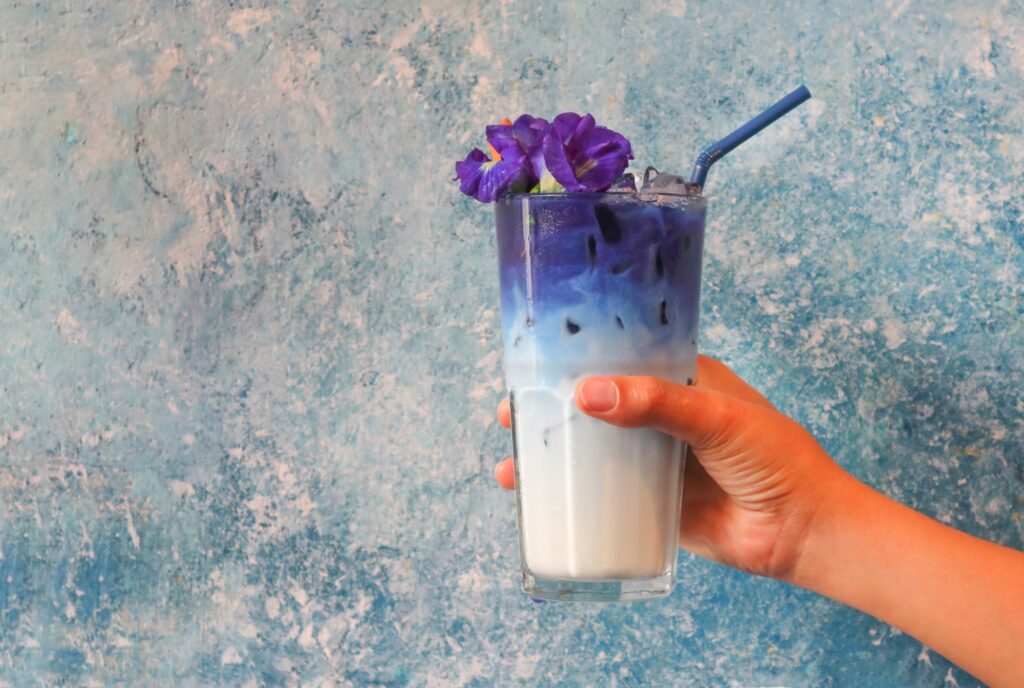
Butterfly Pea Tea and its Culinary Uses
Butterfly pea tea is not only a beverage but also a versatile ingredient in cooking and baking. Its natural blue color can add a unique touch to a variety of dishes. In Southeast Asian cuisine, butterfly pea tea is often used to dye foods, such as rice and noodles, giving them a vibrant blue hue.
The tea can also be used as a natural food coloring alternative in various desserts and baked goods. From blue cakes and cookies to vibrant blue smoothie bowls, butterfly pea tea allows for creative and visually appealing culinary creations.
Additionally, butterfly pea tea can be used to infuse other liquids, such as vodka or gin, to create colorful and flavorful cocktails. Its distinct blue color can make any drink stand out at a party or gathering.
Whether you are a culinary enthusiast or simply want to add a touch of vibrancy to your dishes, butterfly pea tea is a versatile ingredient that can elevate your culinary creations to a whole new level.
Butterfly Pea Tea as a Natural Dye
The natural dyeing properties of butterfly pea tea have been cherished for centuries. In traditional Southeast Asian cultures, the tea is used to dye fabrics, including silk and cotton, to create beautiful textiles. The vibrant blue color is believed to bring good luck and ward off evil spirits.
To use butterfly pea tea as a natural dye, the flowers are typically boiled with the fabric to be dyed. The longer the fabric is soaked in the dye, the deeper the blue color will be. This traditional dyeing technique is still practiced today, preserving an ancient craft and creating stunning blue textiles.
Beyond textiles, butterfly pea tea can also be used as a natural food dye. Its vibrant blue color can be extracted and used to color various culinary creations, from cakes and icing to pasta and sauces. The natural dyeing properties of butterfly pea tea offer a sustainable and eco-friendly alternative to artificial food colorings.
Butterfly Pea Tea and its Cultural Significance
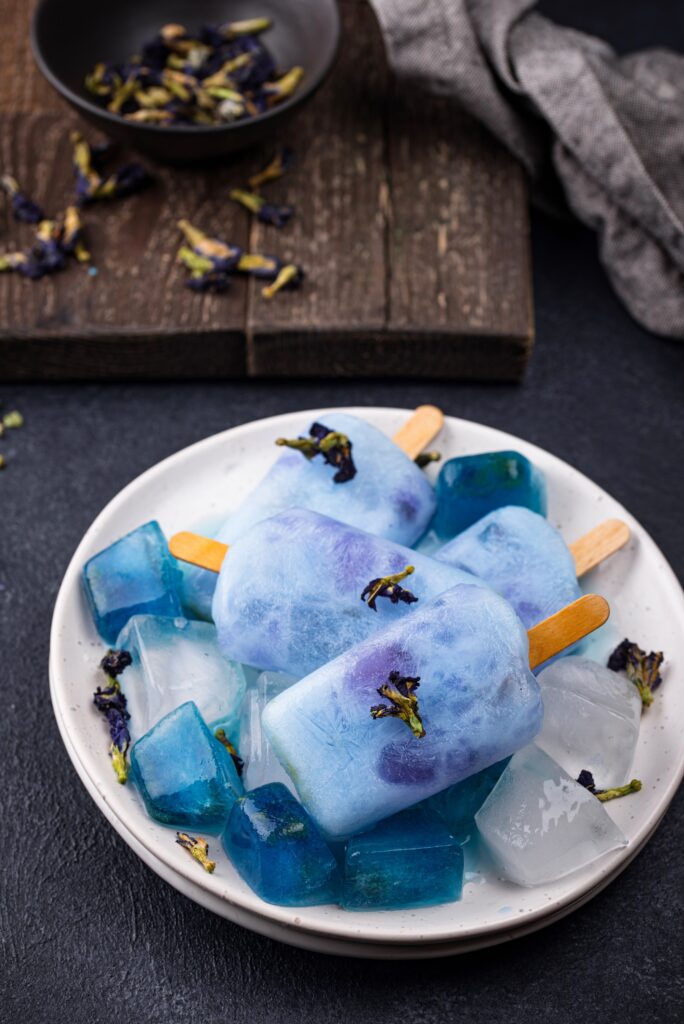
Butterfly pea tea holds a significant place in the cultures of Southeast Asia. In Thailand, the tea is often consumed during special occasions and celebrations. It is believed to bring good fortune and is served as a gesture of hospitality to guests. The vibrant blue color of the tea is also associated with the color of the Thai flag, further symbolizing national pride and unity.
In Malaysia, butterfly pea tea is not only enjoyed as a beverage but also used in traditional Malay wedding ceremonies. The tea is served to guests as a symbol of good luck and prosperity for the newlyweds.
Beyond its cultural significance, butterfly pea tea has gained attention in the wellness and beauty industries. The tea’s potential health benefits, particularly its antioxidant properties, have led to the development of butterfly pea tea-infused skincare products. These products often claim to promote youthful-looking skin and reduce the signs of aging.
Enjoy!
Butterfly pea tea is more than just a visually stunning beverage. Its vivid blue color, captivating history, and potential health benefits have made it a beloved drink in Southeast Asia and beyond. Whether enjoyed on its own, used in culinary creations, or used as a natural dye, butterfly pea tea offers a unique and enchanting experience.
As you explore the world of butterfly pea tea, remember to choose high-quality tea from reputable sellers. Experiment with different brewing methods and recipes to find your favorite way to enjoy this colorful elixir. Whether you’re sipping a cup of butterfly pea tea to relax or using it to create a visually striking dish, let the magic of this vibrant tea transport you to a world of sensory delight.

